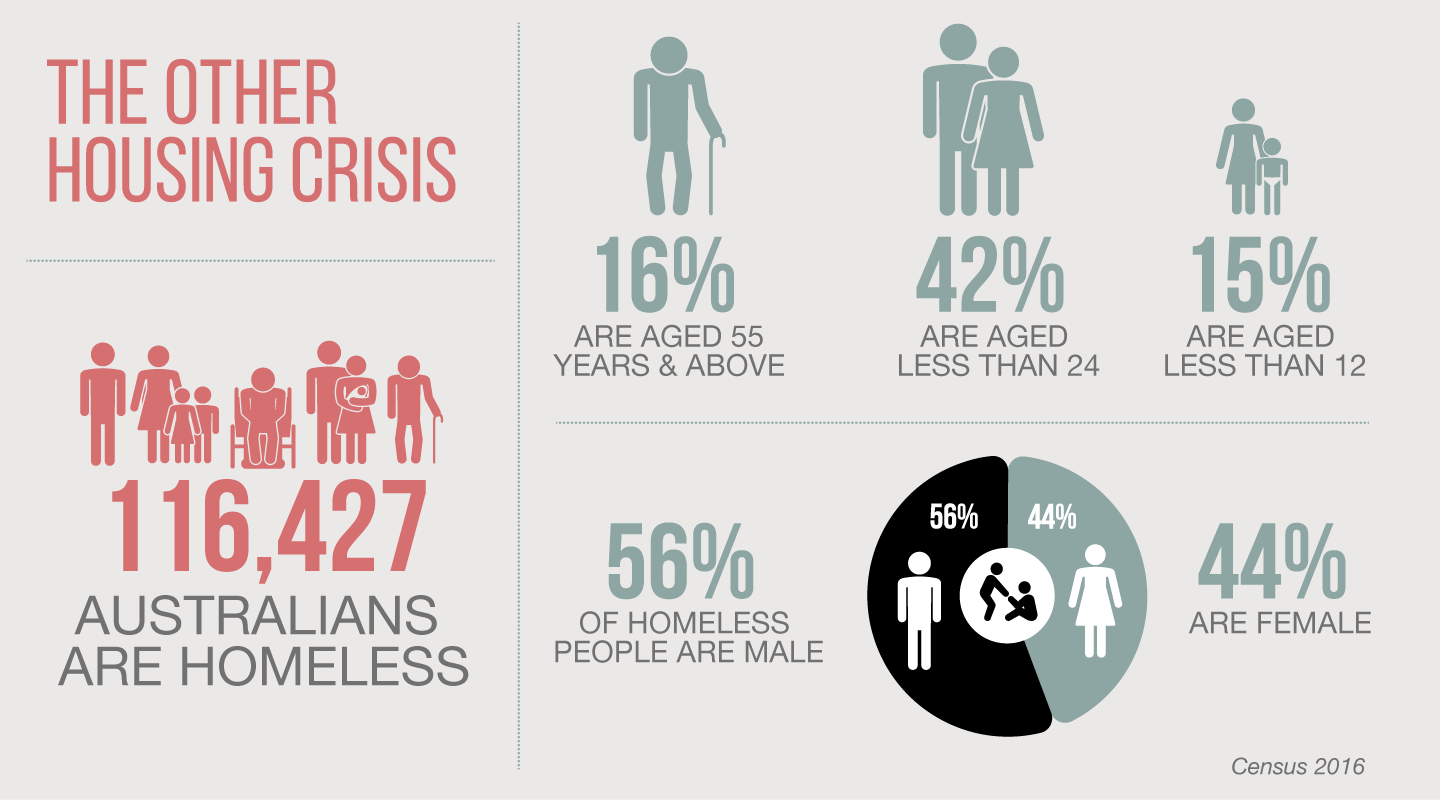By Stephen Acott
Ask yourself this: what’s the worst thing that could happen to you? If the thought of being homeless didn’t enter the equation, you probably didn’t think hard enough because you can’t get much lower, much more helpless and vulnerable than not having a place to call home.
Homelessness is a blight on contemporary society. Australia is a rich, first world country yet it cannot provide basic accommodation for every man, woman and child. Take a deep breath and ponder the following points:
- One in every 200 people is classified as homeless – and the number is rising.
- The number of homeless people aged 65-74 is rising.
- The number of homeless children aged less than 12 is 15,872.
That sound you hear is alarm bells ringing. One woman who has been hearing those bells for more than two decades is Maidie Graham, manager at Uniting Crisis and Homelessness Services in Ringwood and Footscray.
Maidie says one of the reasons for the rise in our homeless population is the lack of affordable housing.
“The biggest change I’ve seen in the past 20 years is the increased cost in renting,” she says.
“Property values have gone up significantly, which is great if you own property, but it’s not if you’re renting.
“The biggest increase of people accessing our services are people who are living in private rental properties and struggling to pay their rent.
“So either the rent has gone up or their income has dropped because they have lost their job, a partner has left or they have become sick, which means there is less money coming in to cover the rent.
“A lot of people are paying a large proportion of their income in rent, which makes it really hard to survive. There’s a whole new group of people who are at risk of homelessness and are struggling as a result of the rising cost of renting.”
Homelessness doesn’t have a face, but it does have a presence – you only have to walk around the city to see its confronting, sombre reality. But there is a big difference, between seeing homelessness and experiencing it. What often gets lost in statistics is the human reality. No one chooses to be homeless and, when it happens, it’s not something you are equipped for.
So what’s life like when you’re homeless?
“I was constantly cold and hungry,” says Sally, who has asked that we change her name. “During winter, we would go to bed at 4pm to keep ourselves warm.”
Sally, 40, has two teenage children and no family to help her. Due to her mental health issues, she finds it hard to hold down a job.
“All three of us have medical issues, which means I often have medical bills coming in,” Sally says. “We’re trying our best to create a better life, but with the mounting medical bills, it can be hard.”
Sally has since found assistance through Uniting Vic.Tas homelessness services.
Before contacting Uniting, Sally and her children had spent six months living in a shed on a friend’s property.
“I was at breaking point and considered ending everything,” Sally says. “I can’t thank Uniting enough. I wouldn’t be here without their help.”
 Darryl, 19, says “people look down on you and think that all people who are homeless want to be like that”.
Darryl, 19, says “people look down on you and think that all people who are homeless want to be like that”.
“Drug taking occurs because it lessens the pain and grief of being homeless and alone,” he says.
Jane (not her real name) asks that people park their prejudice and judgments. “Unless you have been faced with the situation, you can’t understand it,” she says.
So, what’s the solution? Maidie believes we need to tackle the issue on two fronts: government and community.
She says other countries, such as Finland, have made great inroads into the epidemic and, closer to home, projects such as the Maroondah Winter Shelter have proven to be successful.
“More affordable housing is needed so those on lower incomes have access to it,” she says.
“We need to look at systems like in Finland, where the approach is ‘Housing First,’ because having safe and secure housing can make solving health and social problems much easier.
“The Winter Shelter is a joint project between a group of churches in the city of Maroondah. They decided to take action to help the growing number of people sleeping rough in church car parks during the winter months.
“It was based on a project called Stable One, which was established in the Yarra Ranges. Each night, a church commits to providing accommodation and food for up to 12 men sleeping rough.
“There are seven churches who have committed to opening their church hall one night of the week to rough sleepers, and other churches help with providing volunteers. The program is available for men aged 20 years and over, who have nowhere else to stay and don’t have unmanaged mental, physical or drug and alcohol issues.
“Sometimes people are only there for a few nights while they’re seeking alternative housing, but some might be there for the duration of winter.
“It’s not a solution to homelessness, but it’s a compassionate response for people who are sleeping rough.”
Homelessness Week is 4-10 August. Sale is hosting a photography exhibition on homelessness, 5-11 August, Gippsland Art Gallery, 70 Foster St, Sale.

